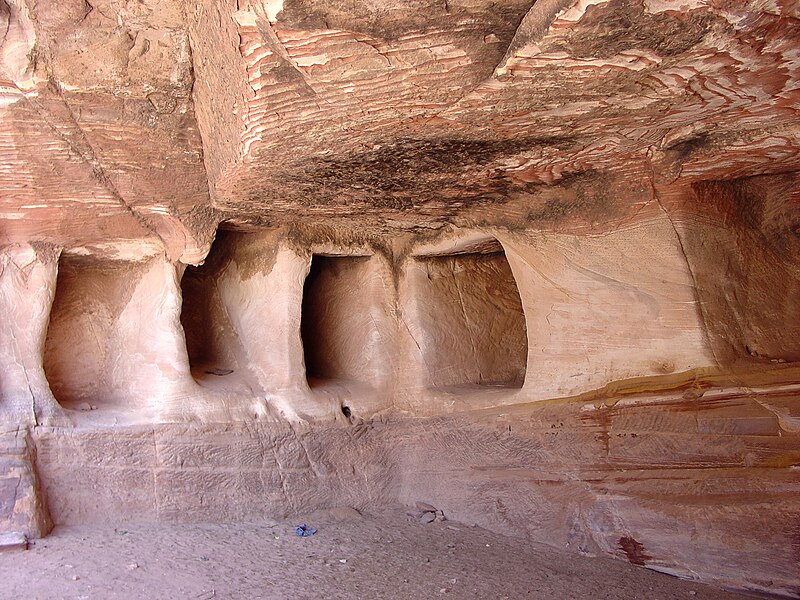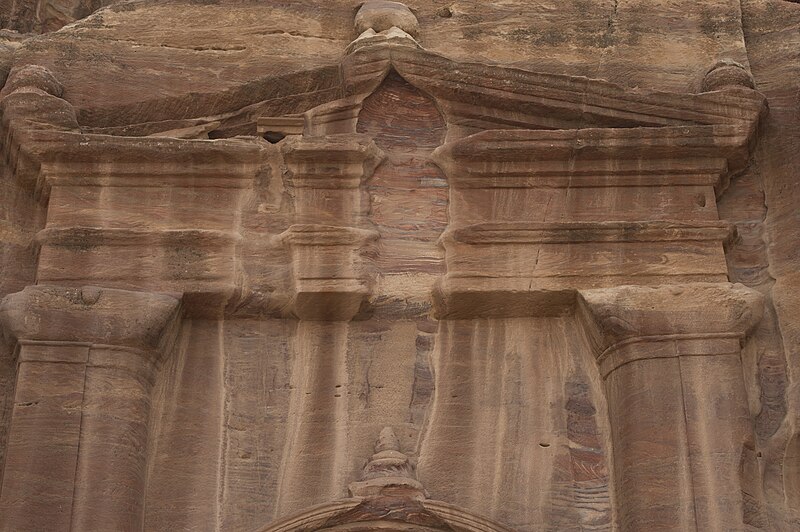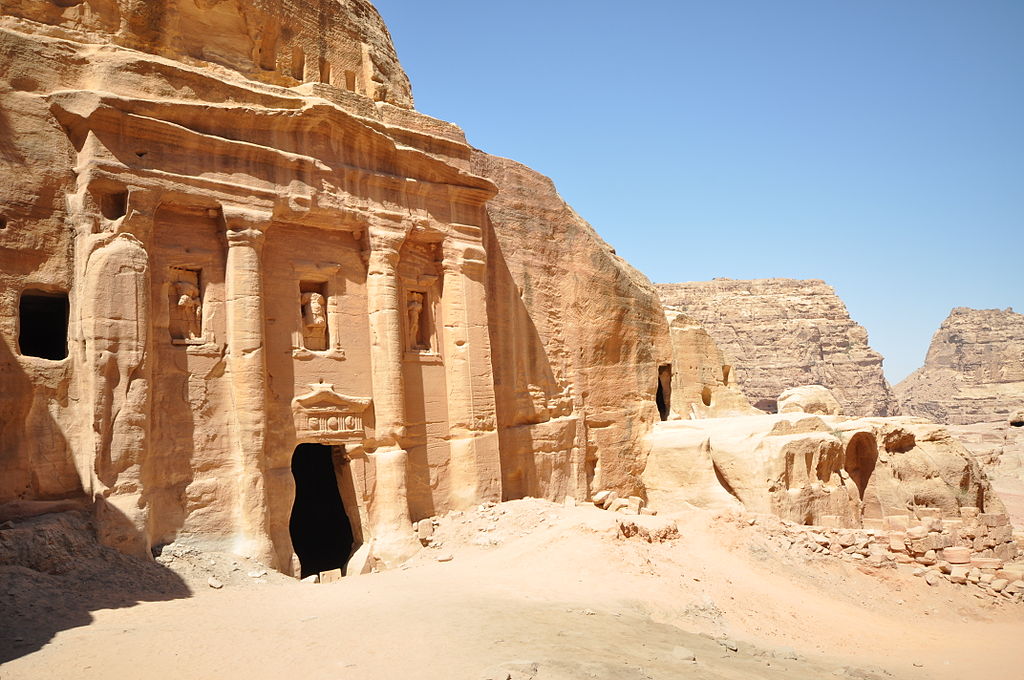The Farasa Valley (Wadi Farasa)
- Open Times: Wadi Farasa is part of the Petra Archaeological Park. Petra Archaeological Park's open times are 06:00-18:00 and until 16:00 in winter.
- Prices: Admission is 90 JD, and the Jordan Pass includes a discount to the Archaeological Park.
- Average Visit Duration: The average time spent in Wadi Farasa is 2 hours.
- Popular Times: The best time to visit Farasa Valley is in the early morning or late afternoon.
- Special Events: Petra by Night, an evening candlelight spectacle, takes place in front of the Treasury on Monday, Wednesday, and Thursday at 20:30. The show features Bedouine music, a light show, and tea.
- Relevant Tours: On a tour of Petra you will see the most important and most impressive sites but to visit Farasa Valley you should take a two-day tour, to make sure you'll have time to enjoy it. With a Petra tour from Israel, you’ll see two countries on one trip.
Farasa Valley is located in the Petra Archaeological Park and borders the town of Wadi Musa on the western side of Mt. Altar. The valley (or wadi) is divided into east and west sections. Farasa Valley East holds the majority of ancient
Nabatean structures but it is not the main part of Petra. Most tourists never reach Farasa Valley and instead stick to the area entered via the Siq. But for those who are willing to follow the path less traveled, Farasa Valley holds unique Nabataean tombs, temples, and other rock-hewn structures. Petra has an average of 2000 visitors a day, but few reach Wadi Farasa which offers a place of tranquility, and a chance to immerse yourself in the past.

Cave-like tomb in Wadi Farasa (Image source: Michael Gunther CC BY 3.0)
How to Get to Wadi Farasa
The hike through Wadi Farasa goes from the High Place of Sacrifice to Qasr al-Bint and you can start at either end. From the Street of Facades take the hike up to the High Place of Sacrifice on Jebel al-Madhbah and from there continue on the path to Wadi Farasa. Alternatively, take the stairs from behind Qasr al-Bint.
Pro Tip: Starting your exploration of Wadi Farasa from Qasr al-Bint is an easier hike than if you start at the High Place of Sacrifice. The loop route from Qasr al-Bint to the High Place of Sacrifice takes a minimum of 2.5 hours.
The path through Wadi Valley is not marked but there is signage at some of the structures. For this reason it is best to hire a private tour guide to explore the wadi.
What to See in Farasa Valley
From Qasr al-Bint you will see the following structures, in this order until reaching the High Place of Sacrifice:
Amud Faraoun
After about half an hour of hiking, you’ll reach a free-standing column that was probably once part of a portico to a structure that no longer exists. It is also called Pharaoh’s Column and Zibb Faraoun.
Por Tip: This half-hour stretch of the hike has no shade.
Broken Pediment Tomb
This square facade carved into the cliff and reached via rock-cut stairs features two pilasters on either side of the entrance which is topped by a broken pediment. You can enter the chamber which is 10 meters long and 8.5 meters wide.
Pro Tip: Take a look inside the small door to the right of the tomb to see a burial chamber with two burial niches on the wall.
Renaissance Tomb
The Renaissance Tomb dates back to the 2nd century AD. It is one of the most impressive structures in Wadi Farasa thanks to the tall twin columns flanking the entrance. Inside the chamber, there are rock-carved loculi (burial niches) that were never used.

Renaissance Tomb, Wadi Farasa, Petra (Image source: Dosseman CC BY 4.0)
Roman Soldier’s Tomb
The Soldier’s Tomb complex was built by the Nabataeans in the 1st century AD, renovated by the Romans in 106 AD, and destroyed by an earthquake in 363 AD. The complex includes a courtyard, several cisterns, rock-cut tombs, and the remains of several two-story buildings. The tomb’s facade features three carved male figures in niches between four columns topped by a frieze and pediment. One of the figures is wearing a Roman military breastplate. The central entrance leads to two chambers. The first chamber has burial niches in the walls, and the second, an antechamber is empty. The courtyard in front of the tomb had porticoes on three sides with 4-meter-high columns connected by arches.

Soldier Tomb, Wadi Farasa, Petra (Image source: Jorge Láscar CC BY 2.0)
Pro Tip: Don’t miss the Colorful Triclinium opposite the Soldier’s Tomb which has bright red and white striped interior walls that would have been covered with painted stucco. The Color Triclinium with its interior walls divided into columns and niches is one of the most impressive interiors in Petra.
Garden Tomb
In the upper area of Wadi Farasa East, you’ll find the Garden Temple or Garden Triclinium. For many years experts thought the structure carved into the rock was a tomb or temple, but they now know that it was used as part of the Nabataean water system.
Pro Tip: Spot the adjacent cistern that was part of the water system. Wide rock-carved stairs lead up to a flat area or platform that would have once been a courtyard. The structure’s facade measures 7.5 meters and has three openings divided by two columns and visitors can enter the two connecting chambers that were carved into the rock. Inside you can see rare Nabataean frescoes depicting local flora and fauna.
Banquet Hall
On the top of the rock outcrop where the Garden Tomb was carved and behind the cistern are the remaining walls of a Nabaraean banquet hall. Today the carved walls are all that remain but it would have had a vaulted ceiling. The chamber was probably used for feasts honoring those buried nearby.
Lion Monument
As you near the High Place of Sacrifice you will see the Lion Monument which may have been a drinking fountain for devotees on their way to make offerings. The “lion” represents the god al-Uzza.
 Login / Register
Login / Register
 Contact Us
Contact Us
 Certificate of Excellence
Certificate of Excellence Guaranteed Departure
Guaranteed Departure Low Prices Guaranteed
Low Prices Guaranteed 24/7 Support
24/7 Support




